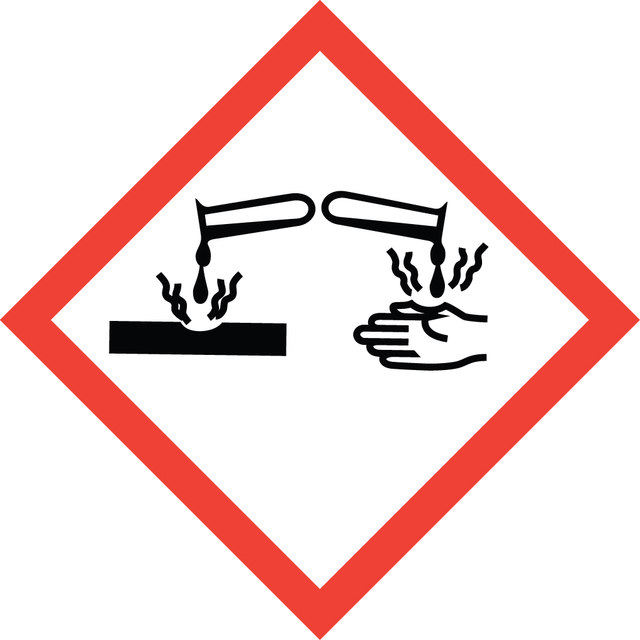- Compare Page




说明
属性
reag. ISO
reag. Ph. Eur.
suitable for SM 5210
suitable for SM 5210
phosphate (PO43-): ≤0.5 mg/kg
sulfate (SO42-): ≤1 mg/kg
sulfite (SO32-): ≤1 mg/kg
iodide (I-): in accordance
sulfate (SO42-): ≤2 mg/kg
sulfite (SO32-): ≤5 mg/kg
sulfate (SO42-): ≤1 ppm
sulfite (SO32-): ≤1 ppm
sulfate (SO42-): ≤1 ppm
sulfite (SO32-): ≤1 ppm
37%
37%
As: ≤0.01 mg/kg
Ba: ≤0.02 mg/kg
Be: ≤0.02 mg/kg
Bi: ≤0.1 mg/kg
Ca: ≤0.5 mg/kg
Cd: ≤0.01 mg/kg
Co: ≤0.01 mg/kg
Cr: ≤0.02 mg/kg
Cu: ≤0.02 mg/kg
Fe: ≤0.2 mg/kg
Ge: ≤0.05 mg/kg
K: ≤0.1 mg/kg
Li: ≤0.01 mg/kg
Mg: ≤0.1 mg/kg
Mn: ≤0.01 mg/kg
Mo: ≤0.02 mg/kg
Na: ≤0.5 mg/kg
Ni: ≤0.02 mg/kg
Pb: ≤0.02 mg/kg
Sr: ≤0.01 mg/kg
Ti: ≤0.1 mg/kg
Tl: ≤0.05 mg/kg
V: ≤0.01 mg/kg
Zn: ≤0.05 mg/kg
Zr: ≤0.1 mg/kg
heavy metals: ≤1 ppm (by ICP-OES)
Fe: ≤1 mg/kg
Fe: ≤0.2 ppm
NH4+: ≤3 ppm
heavy metals: ≤1 ppm (by ICP)
Fe: ≤0.2 ppm
NH4+: ≤3 ppm
heavy metals: ≤1 ppm (by ICP)
≤0.0001% ammonium (NH4)
≤0.005% non-volatile matter
residual solvents, complies
≤0.0001% free chlorine (Cl)
≤0.005% non-volatile matter
puriss. p.a.
Cl
7.93 psi ( 37.7 °C)
7.93 psi ( 37.7 °C)
7.93 psi ( 37.7 °C)
7.93 psi ( 37.7 °C)
用途与安全性
- Monitoring the extraction of copper from chicken dung leachate using an aluminium electrode as an indicator.: Hydrochloric acid is employed in the extraction process of copper from chicken dung, demonstrating its role in environmental and waste management (Kugeria et al., 2019).
- Composition and physico-chemical properties of bottom sediments in the southern part of the Bratsk Reservoir (Russia).: This study utilizes hydrochloric acid to analyze the composition and properties of reservoir sediments, contributing to water quality assessment and environmental monitoring (Rzetala et al., 2019).
- Enhanced alumina recovery from secondary aluminum dross for high purity nanostructured γ-alumina powder production: Kinetic study.: Hydrochloric acid is used to recover alumina from aluminum dross, highlighting its importance in recycling and material science (Mahinroosta et al., 2018).
- Cytochalasins from an Australian Marine Sediment-Derived Phomopsis sp. (CMB-M0042F): Acid-Mediated Intramolecular Cycloadditions Enhance Chemical Diversity.: This research demonstrates the use of hydrochloric acid in facilitating intramolecular cycloadditions, enhancing chemical diversity in natural product synthesis (Shang et al., 2017).
- Microbial and chemical analysis of illicit drugs samples confiscated from different areas of Pakistan.: Hydrochloric acid is applied in the chemical analysis of illicit drugs, assisting in forensic and law enforcement efforts (Hussain et al., 2016).
- Unlocking high-performance HCl adsorption at elevated temperatures: This research demonstrates the use of hydrochloric acid solution for synthesizing robust Ca-Mg-Al mixed oxides. These materials are crucial in environmental applications for adsorbing acidic gases, showcasing hydrochloric acid′s role in developing solutions to combat air pollution (Cao et al., 2024).
- Sustainable and Green Corrosion Inhibition of Mild Steel: Hydrochloric acid is utilized here to test new, environmentally friendly corrosion inhibitors. This is vital in industries where maintaining material integrity against chemical attack is crucial, highlighting hydrochloric acid′s role in innovative material science applications (Rizi et al., 2023).
- Synthesis of Zinc Oxide Nanorods from Zinc Borate Precursor: This study uses hydrochloric acid in the synthesis of zinc oxide nanorods, important for supercapacitor applications. It underscores the critical role of hydrochloric acid in nanomaterials research, pushing the boundaries of energy storage technology (Lefdhil et al., 2023).
- An improved digestion and analysis procedure for silicon in plant tissue: Hydrochloric acid is employed to digest plant tissues for silicon content analysis, enhancing agricultural and biological research methodologies. This application reflects the importance of hydrochloric acid in scientific studies that require precise chemical processing (Langenfeld and Bugbee, 2023).
- N-N(+) Bond-Forming Intramolecular Cyclization of O-Tosyloxy beta-Aminopropioamidoximes and Ion Exchange Reaction: In this research, hydrochloric acid plays a key role in organic synthesis, demonstrating its versatility in pharmaceutical compound development. The study provides insights into the synthesis of complex organic compounds, which are vital in medicinal chemistry (Kayukova et al., 2023).
- Unlocking high-performance HCl adsorption at elevated temperatures: This research demonstrates the use of hydrochloric acid solution for synthesizing robust Ca-Mg-Al mixed oxides. These materials are crucial in environmental applications for adsorbing acidic gases, showcasing hydrochloric acid′s role in developing solutions to combat air pollution (Cao et al., 2024).
- Sustainable and Green Corrosion Inhibition of Mild Steel: Hydrochloric acid is utilized here to test new, environmentally friendly corrosion inhibitors. This is vital in industries where maintaining material integrity against chemical attack is crucial, highlighting hydrochloric acid′s role in innovative material science applications (Rizi et al., 2023).
- Synthesis of Zinc Oxide Nanorods from Zinc Borate Precursor: This study uses hydrochloric acid in the synthesis of zinc oxide nanorods, important for supercapacitor applications. It underscores the critical role of hydrochloric acid in nanomaterials research, pushing the boundaries of energy storage technology (Lefdhil et al., 2023).
- An improved digestion and analysis procedure for silicon in plant tissue: Hydrochloric acid is employed to digest plant tissues for silicon content analysis, enhancing agricultural and biological research methodologies. This application reflects the importance of hydrochloric acid in scientific studies that require precise chemical processing (Langenfeld and Bugbee, 2023).
- N-N(+) Bond-Forming Intramolecular Cyclization of O-Tosyloxy β-Aminopropioamidoximes and Ion Exchange Reaction: In this research, hydrochloric acid plays a key role in organic synthesis, demonstrating its versatility in pharmaceutical compound development. The study provides insights into the synthesis of complex organic compounds, which are vital in medicinal chemistry (Kayukova et al., 2023).
Highly Selective Oxidative Monochlorination To Synthesize Organic Intermediates: 2-Chlorotoluene, 2-Chloroaniline, 2-Chlorophenol, and 2-Chloro-4-methylphenol
A Convenient Halogenation of α,β-Unsaturated Carbonyl Compounds with OXONE® and Hydrohalic Acid (HBr, HCl)
Danger
Eye Dam. 1 - Met. Corr. 1 - Skin Corr. 1B - STOT SE 3
Respiratory system
8B - Non-combustible corrosive hazardous materials
WGK 1
Not applicable
Not applicable
Danger
Eye Dam. 1 - Met. Corr. 1 - Skin Corr. 1B - STOT SE 3
Respiratory system
8B - Non-combustible corrosive hazardous materials
WGK 1
Not applicable
Not applicable
Danger
Eye Dam. 1 - Met. Corr. 1 - Skin Corr. 1B - STOT SE 3
Respiratory system
8B - Non-combustible corrosive hazardous materials
WGK 1
Not applicable
Not applicable
Danger
Eye Dam. 1 - Met. Corr. 1 - Skin Corr. 1B - STOT SE 3
Respiratory system
8B - Non-combustible corrosive hazardous materials
WGK 1
Not applicable
Not applicable

